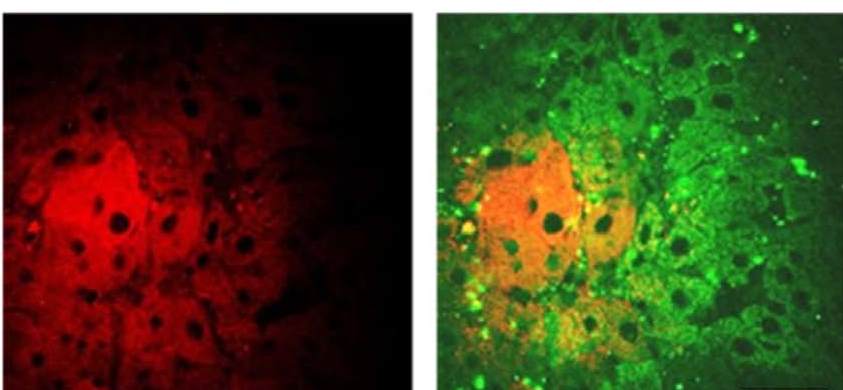Probe offers more accurate detection of biomarker for cancer and other diseases

A new technique offers better sensitivity and accuracy in detecting an essential biomarker of cancer and inflammatory diseases.
Hypochlorous acid HOCl is one of the reactive molecules that our immune system dispatches to attack invading pathogens or potentially harmful irritants. The oxidant is also generated as a result of tissue damage that causes – or even exacerbates – inflammatory diseases such as lung and liver disease, heart attacks, atherosclerosis and neurodegenerative disorder.
But this important biomarker is also notoriously difficult to detect and characterize. Photoluminescent techniques, which cause the molecules to emit light upon absorbing electromagnet radiation, have fallen short in providing the kind of sensitivity and accuracy needed in living tissues for diagnostics and medical research.
“This has been a huge challenge due to hypochlorous acid’s high reactivity with biological molecules and the presence of various antioxidants such as glutathione and cysteine in cells,” says Yonglei Wang, a researcher at KTH Royal Institute of Technology in Stockholm.
He and Run Zhang, a researcher at University of Queensland, have developed and tested a new iridium (III) complex-based chemosensor which they argue offers the most powerful tool yet for in situ probing of HOCl in living cells.
In tests with zebrafish and mice, Wang says the probe exhibits high sensitivity and selectivity in detecting HOCl generations or derivatives from living cells and liver injury.
The scientists will publish their work in January in Biosensors and Bioelectronics.
The new chemosensor is composed of three parts: a ferrocene (Fc) coolant, an iridium (III) complex and an HOCl-responsive hydrazine linker. Compared with other molecular luminescence probes, the Ir-Fc probe offers several advantages, including high photo stability, which enables real-time monitoring of target molecules. Among other benefits, it also provides long luminescence lifetime that allows mapping of HOCl in vivo, without interference from background noise.
Wang says that the chemosensor offers “remarkably enhanced” luminescence, in which the intensity of the light emission increases relevant to the concentration of HOCl. The benefit is greater accuracy and specificity when examining residual HOCl content in biological samples.
“HOCl is associated with various inflammatory diseases, and even cancers,” he says. “This offers a powerful tool to interrogate the mechanism of HOCl production and action in those diseases, potentially benefiting future biomedical research and clinical diagnosis of HOCl-associated diseases.”
David Callahan
